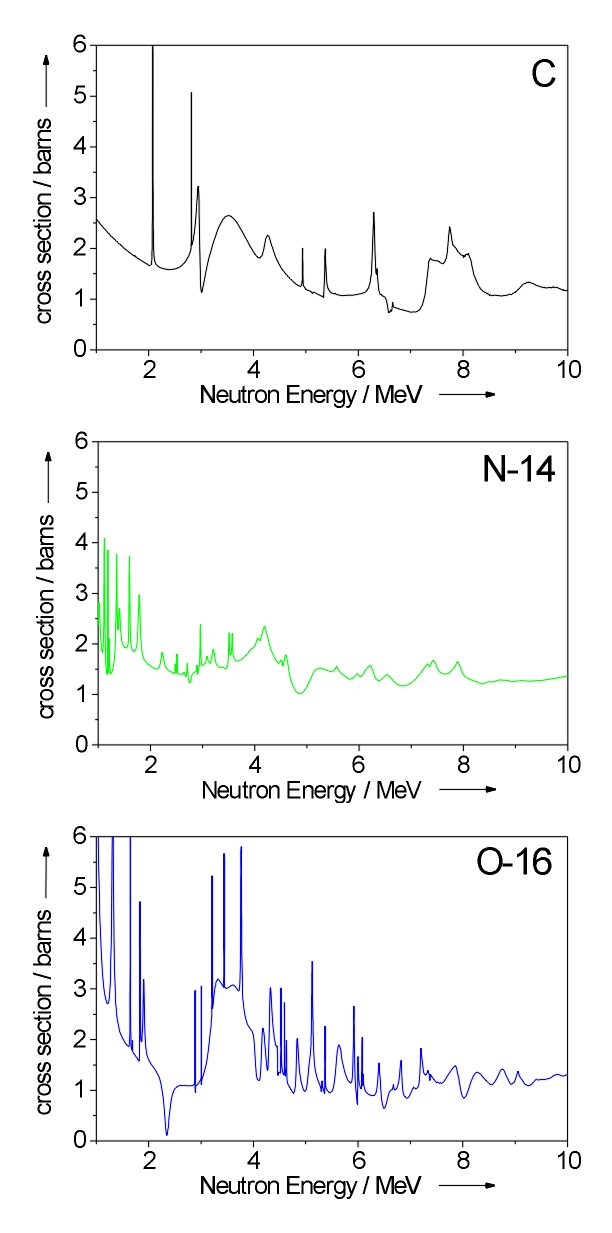Since 2004 PTB and Soreq NRC, in collaboration with the Weizmann Institute of Science are developing a high spatial resolution (sub-mm) PFNTS system based on a time-resolved integrative optical neutron (TRION) detector.
In PFNTS the inspected object is irradiated with neutrons of a broad spectral distribution in the above energy range. If the inspected object contains elements that exhibit sharp cross-section resonances, the transmission neutron spectrum will be modified such that it will exhibit dips and peaks at specific energies corresponding to these resonances.
Thus, the transmission spectrum carries information about the elemental composition of the object. Fig. 2 shows a calculated transmission through 10 cm thick objects comprising TATP (an improvised explosive), RDX (a military explosive) and ethanol which all have similar densities. Indeed, these three items would look the same to an X-ray probe, which measures density only, whereas PFNTS determines the characteristic stoichiometric ratio of elements in the substance.

Fig.1 Cross sections of C, N, O in the MeV region.

